Plan A Travel Vacation For Exploring The Culture Of Caribbean Sports
Travel To Play A Round Of Golf On Your Caribbean Vacation Or Catch Live Sport Events
By Melissa Alvarado Sierra | Published on July 29, 2022
In the Caribbean, sports are a way of life — a way to connect and find community. There's an ingrained culture of sporting excellence on the islands, and locals are deeply dedicated to their favorite pastimes, often becoming global leaders in baseball, cricket, football, car racing and basketball, to name a few. It's more achievable than one would expect for enjoying Caribbean sports on your next vacation — start by heading to where the locals play.
Witness The Passion Of Sport In The Caribbean
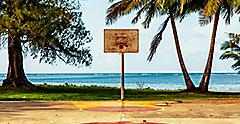
Local Sports Games In The Caribbean
Since the Caribbean is famous for many sports, it's easy to find a way to join in the fun, no matter where you travel for vacation. Puerto Ricans are known as being "sports mad" because of their passionate cheers and unwavering loyalty to their favorite teams. They're especially devoted to basketball and closely follow the local league known as Baloncesto Superior Nacional. Islanders love to cheer for their favorite teams across the island's many basketball courts. One of the most iconic places to immerse yourself in the local basketball culture is the Carmelo Anthony court, named after the famous Puerto Rican NBA player. The Instagram-worthy court, found in the colorful neighborhood of La Perla in Old San Juan, is where locals and visitors play in front of curious and excited onlookers who cheer no matter who's winning. While you're there, grab a cold local beer (I highly recommend Medalla) and an alcapurria from El Callejón de la Tanca as you cheer on the players.

Spectate Sport Events In The Islands
Once you step foot in the Dominican Republic, you'll see why "pelota" (the local name for baseball) is not only the country's favorite sport but also one of its most famous exports. Baseball is more than a sport in the Dominican Republic; it's a way of life, and it has united the country more than anything else. Many young Dominicans dream of following the footsteps of famous baseball stars Sammy Sosa, Pedro Martínez, Robinson Canó and Bartolo Colón. And, with the amount of interest, training and support available in the country, many make that dream come true. Ask locals about an upcoming "juego de pelota" happening close by, and you'll probably have a few options to choose from. Once you arrive at a game, you'll find a huge party of upbeat music and delicious food.
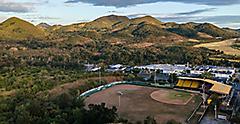
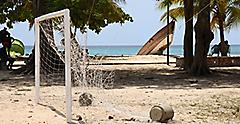
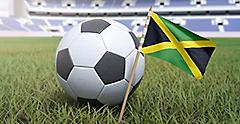
Jamaicans are football fanatics, too, especially after their beloved team, the Reggae Boys, qualified for the World Cup in the late nineties. Today, the sport attracts animated crowds across the different stadiums, mostly at the National Stadium in Kingston.
Another sport that is unique to this part of the world is the ancient Ulama — also known as Maya football, which is still played in Belize today. Described as a mix of soccer and basketball, it was originally played thousands of years ago by the pre-Columbian people of ancient Mesoamerica. Archaeologists have found rubber balls, used to play Ulama, dating back to 1600 BC and more than a thousand ancient ball courts.
While the Maya were not very tall, they were strong and agile with what some call a masochistic pain tolerance. Ulama was a brutal ball game, with players suffering from severe injuries and even death. The type of Ulama played today in Belize is a much milder version to be sure. Try to catch a game of this indigenous sport for a one-of-a-kind glimpse into the past.
Book Now
Games Under The Caribbean Sun

With year-round sunny and pleasant weather, Barbadians see outdoor sports action almost every day. For example, golfing in Barbados is huge. But you won't find many traditional American team sports such as baseball in Barbados, because cricket is their game of choice. The island is perhaps most famous for being the home of cricket legends Desmond Leo Haynes and Cuthbert Gordon Greenidge. There are several carefully manicured grounds that serve as the home of international cricket tournaments, but the Kensington Oval is the pre-eminent home of Barbadian cricket, established in 1882. Visit the stadium for a tour of the grounds, and if you're lucky, catch a game and cheer on the local team.
Cricket is actually the national game in Jamaica. If you get a chance to watch a match live, you'll be immersed in Jamaican culture. Reggae beats play between breaks, and delicious jerk chicken perfumes the air. Surrounded by the infectious energy — and with a Red Stripe (the local beer) in hand — you can't help but dance and cheer, even if you don't understand the game. For a taste of this very Jamaican experience, look no further than Sabina Park or the new Greenfield Stadium (built for the Cricket World Cup). If you want to make new friends in Jamaica, be sure to bring up cricket, and you'll see how fast everyone will try to convince you that their West Indies team is the best there is.
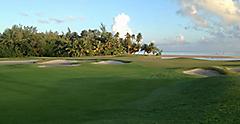
Travel For Golfing In Puerto Rico
Traveling for golfing in Puerto Rico is so popular thanks to the almost constant nice weather. The country boasts some of the most picturesque golf courses in the world, with sweeping ocean views and tropical forest backgrounds. Plan your trip around the Puerto Rico Open, an annual international golf tournament that gathers the best players in the world as part of the PGA tour. It's a beautifully busy and exciting time on the island; there's a special charm to golfing in the Caribbean sunshine.
Exhilarating Caribbean Sports

If you're more into water sports, a heart-pounding sport you can practice in Jamaica is river rafting. The sport was originally introduced by actor Errol Flynn in the 1950s, after using rafts made out of bamboo to carry bananas over the Rio Grande river. People then started to use the rafts as an adventure down the river instead of just using them to transport goods. Today, you can take a river rafting tour in the Rio Grande, Ocho Rios, Montego Bay or Falmouth and enjoy the spectacular views as you glide over the water. It's a great way to cool off on a scorching hot day, too.
Another fun sport to watch or participate in is cycling in Belize. It's incredibly popular in the country, with many races running between Belize City and San Ignacio, about 150-miles roundtrip. The route is made all the more difficult by the tropical sun. Teams from Central America come to Belize to practice and compete, and these events include classes and opportunities for children and seniors to cycle as well. You can follow riders safely from your car, driving to different checkpoints, or you can join the crowds by the road as they celebrate the passing riders.





